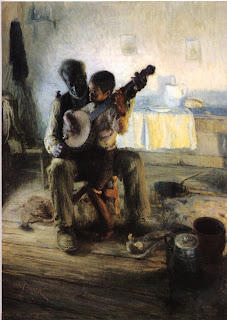Within Suzi Gablik’s article, “The Nature of Beauty in Contemporary Art,” she explains within an interview with James Hillman that: “‘Aesthetics doesn’t serve anything but itself and its own ends. I would like that to change’” (Gablik 7). In a way, I can agree with what Gablik is saying; to me, art has always been about winning the onlooker over with a work of art’s apparent physicality. The colors, texture, patterns within a painting are what is most important. In a sense, what makes the painting visually appealing to a large audience, or even to a single person, is what will make the artist money and give them the fame that they want. In this way of thinking, art is all about aesthetics. On the other hand, Suzi Gablik and fellow artist Joseph Beuys would both agree that art is so much more than the physical design of art to impress others and to make money, it is about creating something that will have a lasting impact on society, and returning to the natural root of the arts to truly send a message to others.
Although I agree that Suzi Gablik has some very innovative ideas regarding the new “paradigms,” in which contemporary art needs to stem from in order to thrive, I personally believe that both Gablik and Beuys are trying way too hard to revive the contemporary arts, and by doing so, trying to turn contemporary art into something that isn’t art at all. In a sense, I derived that Gablik is trying to make all things left alone in nature, art, and to bring the artist back to this natural world in everyday life. This is a bizarre phenomena all it itself. Within an interview with James Hillman discussing the River Project of Dominque Mazeaud, Gablik tries to emphasize the fact that art can truly be an artist who is socially active, picking trash out of a river. There doesn’t have to be a camera taking pictures, there doesn’t have to be a paintbrush making brush strokes on a canvas, or a pencil stenciling on paper. It just is. The scene of Mazeaud picking up trash throughout the river is a symbol of what should be done in today’s world. By suggesting these actions as an artist, Gablik tries to explain that by being socially and environmentally involved, the artist is taking a major role in promoting these very important ideas. Thus, the artist is taking art to a whole new level: to the community, aka “art in service of humanity” (Gablik 6). Therefore, art is no longer something beautiful with a face value. Art is something beautiful and natural; art is something that cannot be paid for. It is something that an artist has to work for without receiving cash back. An artist works for it to bring art back to its natural foundations while bringing the community together. I have to admit, that this is the most bizarre translation of art that I have ever read about. It is within this interview with Hillman, that I truly think Gablik and even Mazeaud are trying way too hard to turn contemporary art into something more natural than it has ever been. When I think of returning art to the natural world, I think of depicting nature within works more than actually “being” a part of the natural world. I’m not sure that the every-day art viewer would be able to agree or truly understand this message, because I certainly do not. As a beginner student, this is a very difficult concept to grasp.
Likewise, in a critical essay regarding the work of Joseph Beuys, entitled, “American Beuys,” by David Levi Strauss, I view Beuys as some sort of deranged art wizard who devotes his life to turning art into something that it is truly not. Beuys hosts a three-day exhibit in which he lives in a dark room with a coyote in order to bring art back to its natural realm. The Earth is art, in a sense. At one point in this bizarre exhibition, there is light that surfaced when ironically enough, a coyote peed all over the Wall Street Journal, in the middle of the dark room. Beuys instantly thought that that was a sign from the art gods that coyotes are trying to tell artists and mankind alike that it is time to reintroduce ourselves to nature. In a sense, this coyote symbol is a reference for all of us to reject the materialism that goes with art, and accept art for its natural beauty. Similar to Gablik’s thoughts, art should not just have a face value, it should have true meaning behind it that will change the minds of others.
I seem to agree that art work has become something that we have decided to hang on our walls and buy for high prices and not even think outside of the box. Although we expect artwork to be beautiful, we completely dismiss the fact that it should have a purpose, and that purpose could be to socially affect the minds of others. In my personal opinion, I think that cleaning a river is an act of service, not of art, and pretending to be a coyote for three days is just a bizarre cry for help.



